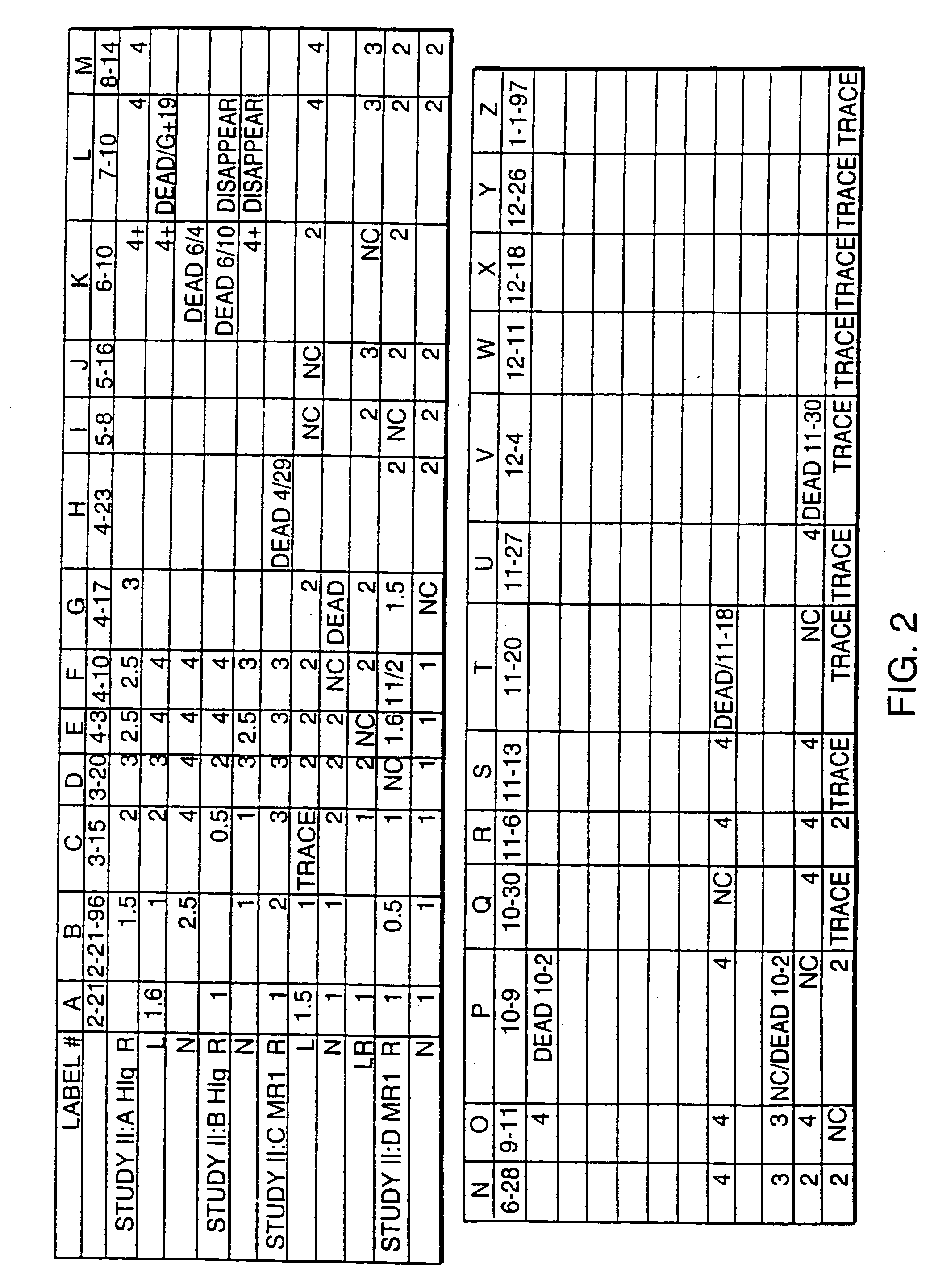Treament of lupus nephritis with anti-CD40L compounds
- Summary
- Abstract
- Description
- Claims
- Application Information
AI Technical Summary
Benefits of technology
Problems solved by technology
Method used
Image
Examples
experiment ii
[0052] Treatment Begun at 4 Months (FIGS. 1 and 2) MR1 treatment was initiated when the mice were 4 months of age. MR1 was administered to treated animals once at 500 ug / animal i.p. when the mice were 4 months old, once at 7 months of age, and once at 9 months followed by once-monthly injections. After 4 months of treatment, 4 of the 5 control animals had died, but four of the six treated animals were yet alive. Three of these four previously surviving treated mice died, one each at 12, 13 and 13.5 months. One still survives, and is now 15 months old, an extraordinary longevity for mice of this cross. Of great interest, the surviving animal (mouse II:DN on FIG. 2) had moderate nephritis (2+proteinuria) from ages 8 to 13 months, which has decreased to only trace levels of proteinuria for the last two months. This is the first demonstration of a functional reversal of nephritis in a mouse of this strain.
Experiment V: Treatment Begun at 4.5 Months (FIGS. 3 and 4)
[0053] MR1 treatment...
PUM
| Property | Measurement | Unit |
|---|---|---|
| Density | aaaaa | aaaaa |
| Density | aaaaa | aaaaa |
Abstract
Description
Claims
Application Information
 Login to View More
Login to View More - R&D
- Intellectual Property
- Life Sciences
- Materials
- Tech Scout
- Unparalleled Data Quality
- Higher Quality Content
- 60% Fewer Hallucinations
Browse by: Latest US Patents, China's latest patents, Technical Efficacy Thesaurus, Application Domain, Technology Topic, Popular Technical Reports.
© 2025 PatSnap. All rights reserved.Legal|Privacy policy|Modern Slavery Act Transparency Statement|Sitemap|About US| Contact US: help@patsnap.com



